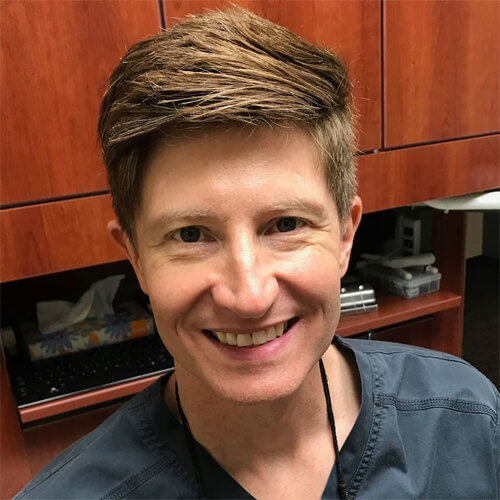When it comes to dental treatment or oral surgery, as many as 10 to 30 percent of patients suffer from dental anxiety. For many, this anxiety stems from a fear of pain associated with dental procedures. At Soundview Family Dental, your comfort is our priority and we understand your anxiety. The good news is, we specialize in comfort dentistry and offer a variety of dental anesthesia options depending on the type of dental treatment you require.
Key Takeaways
- Dental anesthesia provides relaxation during procedures, administered orally, topically, through injection, or inhalation.
- Types of dental anesthesia: local, sedation, laughing gas (nitrous oxide), and general anesthesia.
- Local anesthesia numbs the area, leaving you conscious, used for simpler procedures.
- Sedation can be mild, moderate, or deep, used for anxiety, pain reduction, or patient stillness.
- General anesthesia renders you unconscious, used for complex procedures, with potential side effects discussed by your dentist.
What is dental anesthesia?
Anesthesia refers to a group of different medications available to help provide relaxation and comfort during a dental procedure. Some medications work to reduce anxiety, while others work to minimize pain and discomfort during a procedure. Medications are taken orally, administered topically, injected, or inhaled. Your dentist will work with you to determine the best anesthesia options for you depending on the procedure you require, your overall health history, any known allergies, and your level of dental anxiety.
Types of dental anesthesia
The type of anesthesia your dentist chooses will depend on many different factors, including:
- Your general health history
- Your age
- The type of dental procedure
- The length of the procedure
- Any possible allergies you may have
- Level of dental anxiety
The anesthesia is individualized to you and your procedure and may include a combination of different medications. Here we discuss some of the major types of anesthesia that are available.
1. Local anesthesia
Local anesthesia is often the choice for simpler procedures, such as cavity fillings, which are usually shorter in duration and without complications. Local anesthesia targets the area being treated, leaving you conscious and able to communicate with the dentist. The treatment area will be numb, so you will not experience pain or discomfort during the procedure. Local anesthesia takes effect quickly and usually lasts for an hour or less. This medication can be applied topically or as an injection. In many cases, you will receive a topical numbing agent to the area being treated before receiving an injection deeper into the tissue for the procedure. Common local anesthetics include articaine, bupivacaine, lidocaine, mepivacaine, and prilocaine.
2. Sedation
Sedation offers many different options when it comes to dental care. Dentists use sedation to treat dental anxiety, reduce pain, or help people (often children) remain still during dental procedures. Sedation can be mild, where you are conscious and able to respond; moderate, where you are semiconscious; or deep, where you are barely conscious during the procedure. It can be administered orally, inhaled, given as an injection, or through an IV. Examples of these are diazepam, midazolam, propofol, and nitrous oxide.
3. Laughing gas
Laughing gas, or nitrous oxide, is considered a mild sedative used to manage pain and anxiety safely and effectively during dental treatment. You inhale this gas, mixed with oxygen, through a small mask that simply fits over your nose. Through normally breathing, you feel the effects of the gas within minutes. Nitrous oxide slows down the nervous system, leaving you feeling light-headed, tingly, and a heavy feeling in your arms and legs. Laughing gas is often used for people with dental anxiety or children who are apprehensive about dental visits. In addition, laughing gas may be a good option for those with special needs, severe gag reflexes, and patients who do not respond to local anesthesia.
4. General anesthesia
General anesthesia is often the choice for more complicated dental procedures, like oral surgery. With general anesthesia, you will be completely unconscious. Your muscles are relaxed, you will feel no pain, and have no memory of the procedure. This can be administered through a face mask or via IV. Common general anesthesia medications include propofol, ketamine, diazepam, methohexital, desflurane, isoflurane, and sevoflurane.
Side effects of dental anesthesia
As with many medications, anesthesia may cause side effects and will depend on the anesthesia you are given. In most cases, general anesthesia does come with a greater risk of side effects. Reactions to anesthesia vary from person to person and depend on many different factors. Before your procedure, your dentist will go over any potential risks based on your individual treatment plan. Some possible side effects from sedation or general anesthesia can include:
- Confusion or delirium
- Headaches
- Nausea or vomiting
- Dry mouth
- Sore throat
- Dizziness
- Numbness
- Pain at the injection site
- Sweating or shivering
Dental visits don’t need to be uncomfortable
Dental anxiety and fear of pain keep many patients from coming in for regular dental work. Unfortunately, that often means that when they do come in, it is for an emergency that often involves extensive work or the loss of teeth.
You don’t have to let fear keep you from having a healthy mouth and teeth. At Soundview Family Dental, our caring and professional team is here to walk you through your dental procedure and make sure you are relaxed and comfortable. Visit us online today or call our office at (425) 563-6360 to schedule an appointment and let us heal you get a beautiful, healthy smile.


